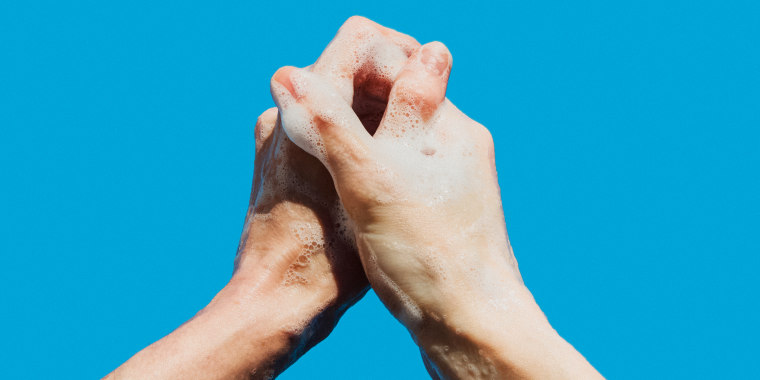If we've learned anything from the COVID-19 pandemic, it's that hand washing is one of the simplest, most basic ways to stay healthy. But few people do it the right way, neither as often — or as long as — they should. According to a 2017 study there's at least one thing hand washers can't get wrong, even when they're trying to wash off nasty germs like E. Coli: the water temperature.
“Whether you use 60-degree Fahrenheit or 100-degree Fahrenheit temperature — or something in the middle — none of those temperatures had a significantly different effect than the other. They were all effective in removing bacteria from the hand,” said Donald Schaffner, distinguished professor and extension specialist at Rutgers, New Brunswick and author of the study.
While some might believe that the temperature of the water is killing bacteria on the hands, that’s not true. It’s the act of washing that removes the grime.
“Water works as a physical cleanser and washes the organisms and microbes off the hands,” said Dr. Raymond Pontzer, director of infection prevention for UPMC in Pittsburgh, who was not involved in the study. “There is no evidence — and this study reinforces that — that the actual temperature of the water has anything to do with the antimicrobial properties of hand washing.”
For the study, in the June 2017 issue of the Journal of Food Protection, Schaffner and his colleagues had 20 people wash their hands in a variety of conditions, including using cool and warm water, lathering for five, 10, 20, or 40 seconds, using antibacterial or regular soap, and applying various amounts of soap. The researchers put a non-virulent strain of E. coli on each person’s hand prior to the cleansing to measure how the techniques worked.
To all the lazy hand washers, lathering for five seconds isn't enough to remove bacteria. But the researchers found little difference between lathering for 10, 20 or 40 seconds.
Soap is important, but more soap doesn’t decrease the germs on the hands.
To prevent the spread of COVID-19, the Centers for Disease Control recommends washing hands after blowing your nose, coughing, and sneezing; after being in a public place; and before and after caring for someone who is sick.
The right way to wash your hands
Here's what the science says:
1. Sing 'Happy Birthday'
The song takes about 20 seconds, which is the amount of time people should wash their hands.
2. Lather with soap
Water alone won't remove enough germs. But you don't need antibacterial soap, which does little or nothing to make the soap work better, according to the FDA.
3. Dry with a paper towel
In a previous study, Schaffner examined the difference between using a paper towel or airing drying hands. It turns out evaporating the water from your hand doesn’t do much for cleanliness, while paper towels sloth off extra germs.
“The act of physically rubbing with a paper towel did actually remove some bacteria,” he said.
4. Use the water temp you like
Still feel like you need hot water to have clean hands? Go ahead. Do what makes you comfortable. Just make sure to wash your hands.
“We want people to be comfortable in washing their hands and if cooler water is more comfortable do that or if warmer is more comfortable do that,” Schaffner said.
5. Moisturize
People who frequently wash or do so with hot water might experience cracked and broken skin, which harbors bacteria. This dry skin also makes it harder for people to remove bacteria, so Pontzer recommends people use lotion.
"It actually reduces the amount of bacteria that hangs on the skin."
If soap and water isn't available, the CDC advises using hand sanitizer that contains 60% alcohol.
Related:
This story was originally published in 2017.


